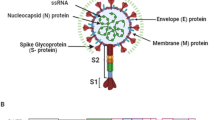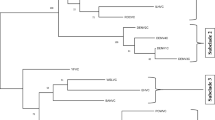Abstract
Despite the various research efforts towards the drug discovery program for Zika virus treatment, no antiviral drugs or vaccines have yet been discovered. The spread of the mosquito vector and ZIKV infection exposure is expected to accelerate globally due to continuing global travel. The NS3-Hel is a non-structural protein part and involved in different functions such as polyprotein processing, genome replication, etc. It makes an NS3-Hel protein an attractive target for designing novel drugs for ZIKV treatment. This investigation identifies the novel, potent ZIKV inhibitors by virtual screening and elucidates the binding pattern using molecular docking and molecular dynamics simulation studies. The molecular dynamics simulation results indicate dynamic stability between protein and ligand complexes, and the structures keep significantly unchanged at the binding site during the simulation period. All inhibitors found within the acceptable range having drug-likeness properties. The synthetic feasibility score suggests that all screened inhibitors can be easily synthesizable. Therefore, possible inhibitors obtained from this study can be considered a potential inhibitor for NS3 Hel, and further, it could be provided as a lead for drug development.
Graphical abstract









Similar content being viewed by others
References
Marin MS, Zanotto PDA, Gritsun TS, Gould EA (1995) Phylogeny of TYU, SRE, and CFA virus: different evolutionary rates in the genus flavivirus. Virology 206(2):1133–1139. https://doi.org/10.1006/viro.1995.1038
Paixão ES, Barreto F, da Glória Teixeira M, da Conceição N, Costa M, Rodrigues LC (2016) History, epidemiology, and clinical manifestations of Zika: a systematic review. Am J Public Health 106(4):606–612. https://doi.org/10.2105/ajph.2016.303112
Campos GS, Bandeira AC, Sardi SI (2015) Zika virus outbreak, bahia, brazil. Emerg Infect Dis 21(10):1885. https://doi.org/10.3201/eid2110.150847
Arzuza-Ortega L, Polo A, Pérez-Tatis G, López-García H, Parra E, Pardo-Herrera LC, Rodríguez-Morales AJ (2016) Fatal sickle cell disease and Zika virus infection in girl from Colombia. Emerg Infect Dis 22(5):925. https://doi.org/10.3201/eid2205.151934
Azevedo RS, Araujo MT, Martins Filho AJ, Oliveira CS, Nunes BT, Cruz AC, Vasconcelos PF (2016) Zika virus epidemic in Brazil. I. Fatal disease in adults: clinical and laboratorial aspects. J Clin Virol 85:56–64. https://doi.org/10.1016/j.jcv.2016.10.024
Fernandez-Garcia MD, Mazzon M, Jacobs M, Amara A (2009) Pathogenesis of flavivirus infections: using and abusing the host cell. Cell Host Microbe 5(4):318–328. https://doi.org/10.1016/j.chom.2009.04.001
Salonen ANNE, Ahola TERO, Kääriäinen LEEVI (2004) Viral RNA replication in association with cellular membranes. Membr Traffick Viral Replication. https://doi.org/10.1007/3-540-26764-6_5
Yamashita T, Unno H, Mori Y, Tani H, Moriishi K, Takamizawa A, Matsuura Y (2008) Crystal structure of the catalytic domain of Japanese encephalitis virus NS3 helicase/nucleoside triphosphatase at a resolution of 1.8 Å. Virology 373(2):426–436. https://doi.org/10.1016/j.virol.2007.12.018
Fang J, Jing X, Lu G, Xu Y, Gong P (2019) Crystallographic snapshots of the Zika Virus NS3 helicase help visualize the reactant water replenishment. ACS Infectious Dis 5(2):177–183. https://doi.org/10.1021/acsinfecdis.8b00214
Luo D, Xu T, Watson RP, Scherer-Becker D, Sampath A, Jahnke W, Lescar J (2008) Insights into RNA unwinding and ATP hydrolysis by the flavivirus NS3 protein. EMBO J 27(23):3209–3219. https://doi.org/10.1038/emboj.2008.232
Singleton MR, Dillingham MS, Wigley DB (2007) Structure and mechanism of helicases and nucleic acid translocases. Annu Rev Biochem 76:23–50. https://doi.org/10.1146/annurev.biochem.76.052305.115300
Jain R, Coloma J, García-Sastre A, Aggarwal AK (2016) Structure of the NS3 helicase from Zika virus. Nat Struct Mol Biol 23(8):752–754. https://doi.org/10.1038/nsmb.3258
Matusan AE, Pryor MJ, Davidson AD, Wright PJ (2001) Mutagenesis of the Dengue virus type 2 NS3 protein within and outside helicase motifs: effects on enzyme activity and virus replication. J Virol 75(20):9633–9643. https://doi.org/10.1128/jvi.75.20.9633-9643.2001
Sampath A, Xu T, Chao A, Luo D, Lescar J, Vasudevan SG (2006) Structure-based mutational analysis of the NS3 helicase from dengue virus. J Virol 80(13):6686–6690. https://doi.org/10.1128/jvi.02215-05
Yuan S, Chan JFW, den-Haan H, Chik KKH, Zhang AJ, Chan CCS, Yuen KY (2017) Structure-based discovery of clinically approved drugs as Zika virus NS2B-NS3 protease inhibitors that potently inhibit Zika virus infection in vitro and in vivo. Antivir Res 145:33–43. https://doi.org/10.1016/j.antiviral.2017.07.007
Devillers J (2018) Repurposing drugs for use against Zika virus infection. SAR QSAR Environ Res 29(2):103–115. https://doi.org/10.1080/1062936x.2017.1411642
Xu M, Lee EM, Wen Z, Cheng Y, Huang WK, Qian X, Tang H (2016) Identification of small-molecule inhibitors of Zika virus infection and induced neural cell death via a drug repurposing screen. Nat Med 22(10):1101–1107. https://doi.org/10.1038/nm.4184
Kumar D, Aarthy M, Kumar P, Singh SK, Uversky VN, Giri R (2020) Targeting the NTPase site of Zika virus NS3 helicase for inhibitor discovery. J Biomol Struct Dyn 38(16):4827–4837. https://doi.org/10.1080/07391102.2019.1689851
Retallack H, Di Lullo E, Arias C, Knopp KA, Laurie MT, Sandoval-Espinosa C, DeRisi JL (2016) Zika virus cell tropism in the developing human brain and inhibition by azithromycin. Proc Natl Acad Sci USA 113(50):14408–14413. https://doi.org/10.1073/pnas.1618029113
Kumar N, Mishra SS, Sharma CS, Singh HP, Kalra S (2018) In silico binding mechanism prediction of benzimidazole based corticotropin releasing factor-1 receptor antagonists by quantitative structure activity relationship, molecular docking and pharmacokinetic parameters calculation. J Biomol Struct Dyn 36(7):1691–1712. https://doi.org/10.1080/07391102.2017.1332688
Azam MA, Jupudi S, Saha N, Paul RK (2019) Combining molecular docking and molecular dynamics studies for modelling Staphylococcus aureus MurD inhibitory activity. SAR QSAR Environ Res 30(1):1–20. https://doi.org/10.1080/1062936x.2018.1539034
Tian H, Ji X, Yang X, Xie W, Yang K, Chen C, Yang H (2016) The crystal structure of Zika virus helicase: basis for antiviral drug design. Protein Cell 7(6):450–454. https://doi.org/10.1007/s13238-016-0275-4
Berman HM, Battistuz T, Bhat TN, Bluhm WF, Bourne PE, Burkhardt K, Zardecki C (2002) The protein data bank. Acta Crystallogr D 58(6):899–907. https://doi.org/10.1107/s0907444902003451
Hajduk PJ, Huth JR, Tse C (2005) Predicting protein druggability. Drug Discov Today 10(23–24):1675–1682. https://doi.org/10.1016/s1359-6446(05)03624-x
Halgren T (2007) New method for fast and accurate binding-site identification and analysis. Chem Biol Drug Des 69(2):146–148. https://doi.org/10.1111/j.1747-0285.2007.00483.x
Grinter SZ, Zou X (2014) Challenges, applications, and recent advances of protein-ligand docking in structure-based drug design. Molecules 19(7):10150–10176. https://doi.org/10.3390/molecules190710150
Athar M, Lone MY, Khedkar VM, Jha PC (2016) Pharmacophore model prediction, 3D-QSAR and molecular docking studies on vinyl sulfones targeting Nrf2-mediated gene transcription intended for anti-Parkinson drug design. J Biomol Struct Dyn 34(6):1282–1297. https://doi.org/10.1080/07391102.2015.1077343
Korkmaz S, Zararsiz G, Goksuluk D (2014) Drug/nondrug classification using support vector machines with various feature selection strategies. Comput Methods Programs Biomed 117(2):51–60. https://doi.org/10.1016/j.cmpb.2014.08.009
Rowley JD (1973) A new consistent chromosomal abnormality in chronic myelogenous leukaemia identified by quinacrine fluorescence and Giemsa staining. Nature 243(5405):290–293. https://doi.org/10.1038/243290a0
Kumar H, Raj U, Gupta S, Varadwaj PK (2016) In-silico identification of inhibitors against mutated BCR-ABL protein of chronic myeloid leukemia: a virtual screening and molecular dynamics simulation study. J Biomol Struct Dyn 34(10):2171–2183. https://doi.org/10.1080/07391102.2015.1110046
Genheden S, Kuhn O, Mikulskis P, Hoffmann D, Ryde U (2012) The normal-mode entropy in the MM/GBSA method: effect of system truncation, buffer region, and dielectric constant. J Chem Inf Model 52(8):2079–2088. https://doi.org/10.1021/ci3001919
Bowers KJ, Chow DE, Xu H, Dror RO, Eastwood MP, Gregersen BA, Shaw DE (2006) Scalable algorithms for molecular dynamics simulations on commodity clusters. In SC’06: Proceedings of the 2006 ACM/IEEE Conference on Supercomputing (pp. 43–43). IEEE. https://doi.org/10.1145/1188455.1188544
Guo Z, Mohanty U, Noehre J, Sawyer TK, Sherman W, Krilov G (2010) Probing the α-helical structural stability of stapled p53 peptides: molecular dynamics simulations and analysis. Chem Biol Drug Des 75(4):348–359. https://doi.org/10.1111/j.1747-0285.2010.00951.x
Shekhar MS, Venkatachalam T, Sharma CS, Singh HP, Kalra S, Kumar N (2018) Computational investigation of binding mechanism of substituted pyrazinones targeting corticotropin releasing factor-1 receptor deliberated for anti-depressant drug design. J Biomol Struct Dyn. https://doi.org/10.1080/07391102.2018.1513379
Mishra SS, Ranjan S, Sharma CS, Singh HP, Kalra S, Kumar N (2021) Computational investigation of potential inhibitors of novel coronavirus 2019 through structure-based virtual screening, molecular dynamics and density functional theory studies. J Biomol Struct Dyn 39(12):4449–4461. https://doi.org/10.1080/07391102.2020.1791957
Chandrashekhar M, Nayak VL, Ramakrishna S, Mallavadhani UV (2016) Novel triazole hybrids of myrrhanone C, a natural polypodane triterpene: synthesis, cytotoxic activity and cell based studies. Eur J Med Chem 114:293–307
Madasu C, Karri S, Sangaraju R, Sistla R, Uppuluri MV (2020) Synthesis and biological evaluation of some novel 1,2,3-triazole hybrids of myrrhanone B isolated from Commiphora mukul gum resin: identification of potent antiproliferative leads active against prostate cancer cells (PC-3). Eur J Med Chem 188:111974. https://doi.org/10.1016/j.ejmech.2019.111974
Daina A, Michielin O, Zoete V (2017) SwissADME: a free web tool to evaluate pharmacokinetics, drug-likeness and medicinal chemistry friendliness of small molecules. Sci Rep 7(1):1–13. https://doi.org/10.1038/srep42717
Kumar D, Sharma N, Aarthy M, Singh SK, Giri R (2020) Mechanistic insights into Zika virus NS3 helicase inhibition by Epigallocatechin-3-gallate. ACS Omega 5(19):11217–11226. https://doi.org/10.1021/acsomega.0c01353
Ertl P, Schuffenhauer A (2009) Estimation of synthetic accessibility score of drug-like molecules based on molecular complexity and fragment contributions. J Cheminform 1(1):1–11. https://doi.org/10.1186/1758-2946-1-8
Author information
Authors and Affiliations
Corresponding author
Ethics declarations
Conflicts of interest
No competing interests exist.
Additional information
Publisher's Note
Springer Nature remains neutral with regard to jurisdictional claims in published maps and institutional affiliations.
Supplementary Information
Below is the link to the electronic supplementary material.
Rights and permissions
Springer Nature or its licensor holds exclusive rights to this article under a publishing agreement with the author(s) or other rightsholder(s); author self-archiving of the accepted manuscript version of this article is solely governed by the terms of such publishing agreement and applicable law.
About this article
Cite this article
Mishra, S.S., Kumar, N., Karkara, B.B. et al. Identification of potential inhibitors of Zika virus targeting NS3 helicase using molecular dynamics simulations and DFT studies. Mol Divers 27, 1689–1701 (2023). https://doi.org/10.1007/s11030-022-10522-5
Received:
Accepted:
Published:
Issue Date:
DOI: https://doi.org/10.1007/s11030-022-10522-5




